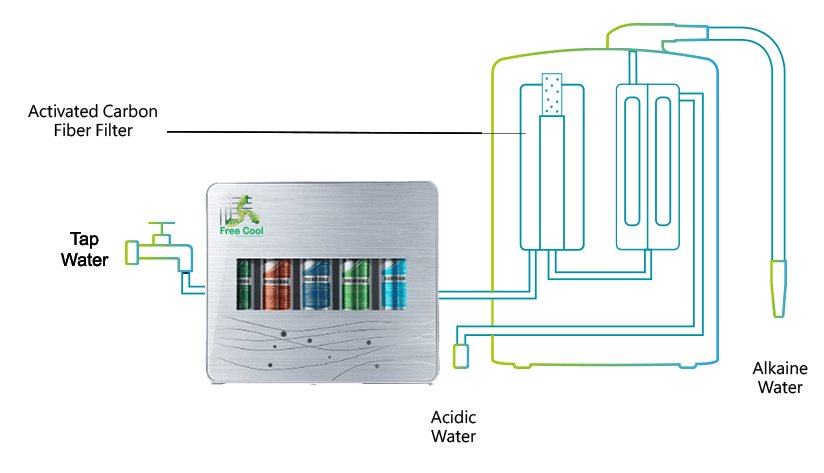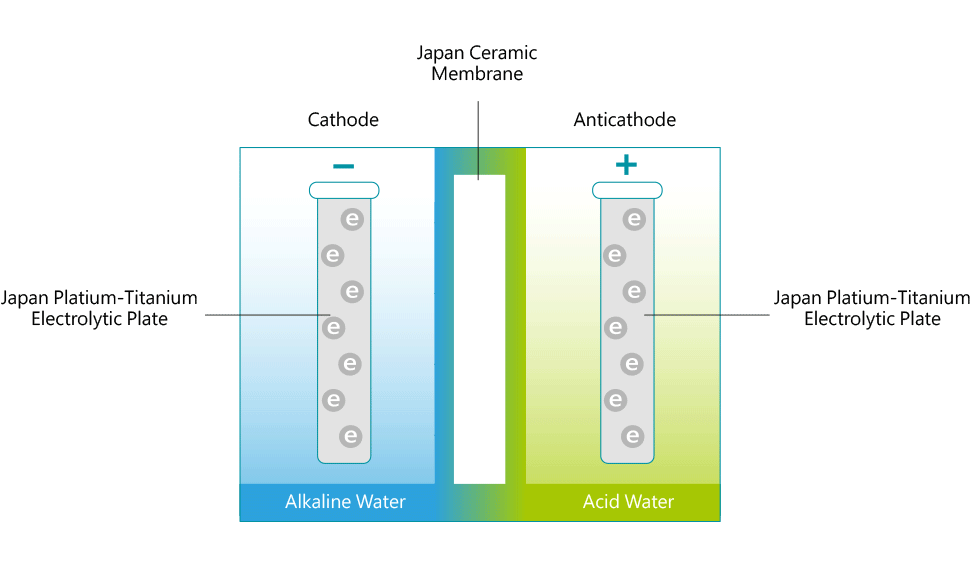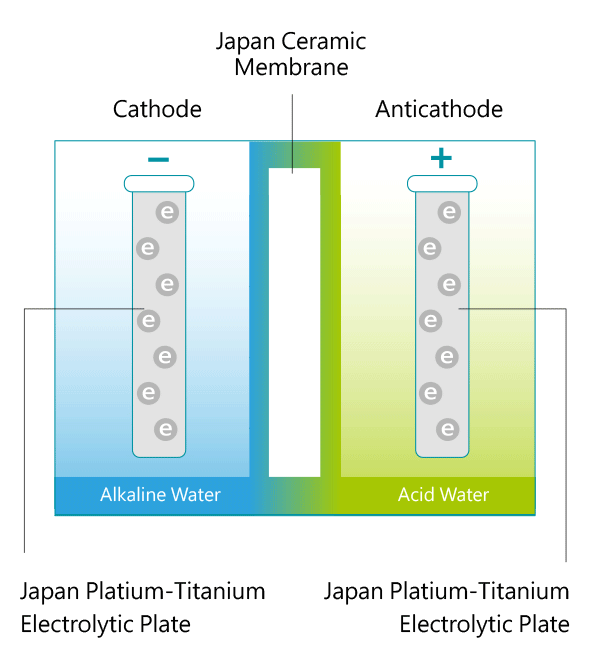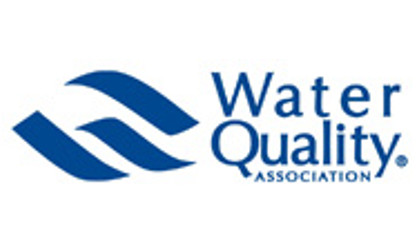How It Works
Alkaline Water Ionizer
Tech
Technology Overview
A hydrogen atom (center) contains a single proton and a single electron. Removal of the electron gives a cation (positive ion)(left), whereas addition of an electron gives an anion (negative ion) (right). The hydrogen anion, with its loosely held two-electron cloud, has a larger radius than the neutral atom, which in turn is much larger than the bare proton of the cation. Hydrogen forms the only cation that has no electrons, but even cations that (unlike hydrogen) still retain one or more electrons are still smaller than the neutral atoms or molecules from which they are derived.
A water ionizer electrolyzes water with direct current voltage (DCV). A special attachment re-directs tap water out of the faucet through a plastic hose into the ionizer unit. Inside, the water is first filtered through activated charcoal.
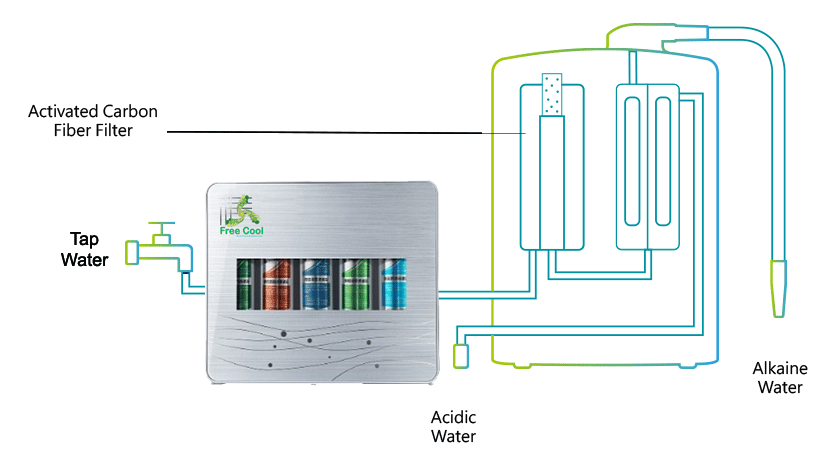
Each ionizer unit has a specially engineered electrolysis chamber equipped with platinum-coated titanium electrolysis plates. The filtered water flows into the chamber and is directed through a ceramic membrane that is positioned between the charged electrolysis plates.
Automatic Cleansing —
No-Hassle Design


Active carbon fiber
manufactured in USA
Industry leading USA manufacturing technique complies with the highest drinking water standards.
Higher absorption efficiency than coconut-shell granular carbon, is able to absorb very fine impurities, chemicals, such as chlorine, agriculture pesticides, etc.
Platinum-titanium electrolysis plate &
ion membrane-manufactured in Japan
- High-tech platinum-titanium electrolysis plate manufactured by KOBE Steel, Japan.
- Ceramic ion membrane manufactured by Yuasa, Japan, temperature-resistant and non-toxic.
An ion is an atom or molecule in which the total number of electrons is not equal to the total number of protons, giving it a net positive or negative electrical charge.

- Legend
 Proton
Proton Electron
Electron
| No. of Protons | 1 | 1 | 1 |
| No. of Electrons | 0 | 1 | 2 |
| Charge | +1 | 0 | -1 |
| Notation | H+ | H | H- |
| Classitication | Cation | Neutral (Not an Ion) |
Cation |
The conditioned or 'Ionized' water then exits through two ports (an alkaline port and an acidic port).Cations are attracted to the negatively charged plate to produce cathodic water (reduced water). Anions, negatively charged ions, are attracted to the positively charged plate to produce anodic water (oxidized water).
The (-) cathode attracts minerals such as sodium, magnesium, potassium, calcium and others and the water surrounding the terminal becomes alkaline with an increase in hydrogen ions (H+). The anti-cathode terminal attracts ions such as oxygen, sulfuric acid, sulfur and the water surrounding the terminal becomes acidic with an increase in hydroxide ions (OH-).
The water discharged from the alkaline port has a higher pH value and contains minerals, like Calcium and Magnesium, that are in a form that is more suitable for the body to assimilate.
Calcium, Potassium, Magnesium and other minerals can normally be found in drinking water. But these minerals in are complex, inorganic and very stable. These are not easily assimilated by the body. However, minerals in ionized water are separated into ions with (-)ORP. These ions unite with the acidic residues with positive ions. They act as buffering agents that are easily assimilated and eliminated by our bodies.





Sulfuric Acld(SO42-)
Carbonic Acid(Ca+)
Nitrlc Acid(NO2-)


Solidum(Na+)
Calcium(Ca+)
Magnesium Ions(Ma2+)
The number of plates inside the electrolysis chamber varies between systems. Some systems have 3 plates, others 5 and more are possible. The number of plates affects unit performance. The more plates the unit has, the larger the possible range of pH values and the large, and more importantly, the more -ORP values possible of the produced water.
Health and Alkaline Water
Some regions, such as Yuzurihara in Japan, Turpan in China and Fenzha in Pakistan, are known for the longevity of their inhabitants, who seem to have the secret of "long life".
go on
Why alkaline water?
The normal pH of a person should be between 7.30 and 7.45, i.e. alkaline. However, few people in the world manage to maintain this healthy pH level.
go on
How is it made?
The ionizer activates the electrolysis of the water by applying a continuous electric potential difference (DC); thanks to this, the water is then separated into Alkaline and Acid.
go on
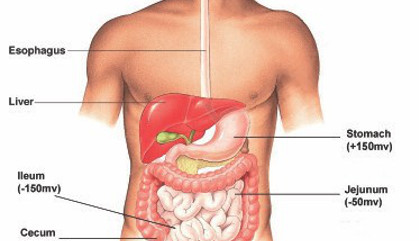
Drinking water at ORP-250mV?
ORP (Oxidation Reduction Potential) is a measure of the tendency of a chemical species to acquire electrons and ...
+ continue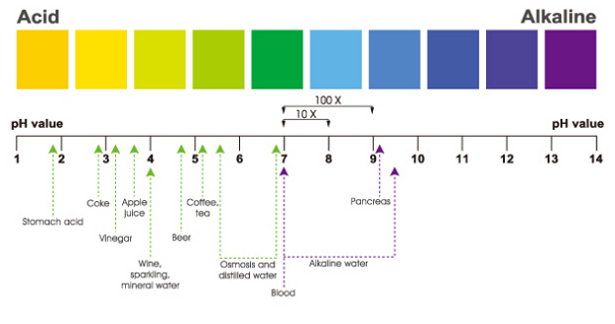
The PH degree
The pH is the negative decimal logarithm of the hydrogen ion activity in a solution and varies with the ...
+ continue
Ways of use
The water treated by our ionizers is divided into three macro groups that will give you the opportunity to ...
+ continueWhy do we need alkaline water?
The normal pH of a person should be between 7.30 and 7.45, i.e. alkaline. However, few people in the world manage to maintain this healthy pH level. This can be caused by:
- - a poor immune system
- - an inefficient digestive system
- - a hypersensitivity to daily tensions (stress)
- - a slow metabolism
All this can be a cause of various diseases including hepatitis, cancer, paralysis, hypertension, heart ailments, iabete and nervous disorders. One of the main reasons why our pH is acidic, i.e. lower than 7.30, is our diet, mainly composed of acidic foods and drinks such as, for example, meat and carbonated drinks. Incorrect nutrition creates hyperacidosis in our body, a cause of diseases linked to cellular aging. Headache, fatigue, stomach acid, back pain, muscle contractures, constipation, allergies, gout, osteoarthritis, rheumatism, impaired blood values, excess fat, swollen legs; all these symptoms indicate that the cells of the vital organs are no longer adequately fed and that in the organism poisonous slag deposits were formed: acid. Ionized alkaline water, if drunk regularly, can solve all this! Hence the idea of ??the ionizer.
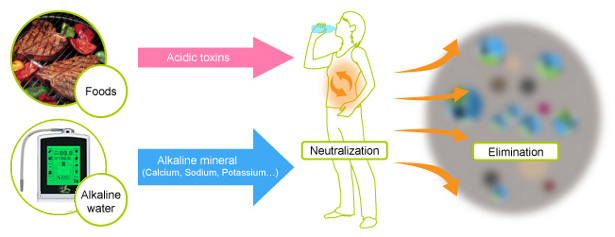
How is Ionized Alkaline Water produced?
The ionizer activates the electrolysis of the water by applying a continuous electric potential difference (DC); thanks to this, the water is then separated into Alkaline and Acid. Some ions, such as Na +, Ca2, Mg2 +, K +, are attracted to the cathode and the water in that area becomes alkaline because the OH ions increase. Other ions, such as O2, SO4 2-, CO3 2- are attracted to the anode and the water in that area becomes acidic because the H + ions increase.

Sodium, Calcium, Magnesium and Potassium are present in food and water, but in the form of complex and stable molecules and therefore they are not easily assimilated by the human body. In alkaline water, however, these substances are present in the form of ions and this makes it easy to assimilate them and helps to eliminate acid waste from our body. For this reason, drinking alkaline water for a long time generally improves physical condition.
ORP
ORP (Oxidation Reduction Potential) is a measure of the tendency of a chemical species to acquire electrons and therefore be reduced. And it is measured in millivolts (mV).
The more negative the potential to which water is subjected, the more positive alkaline ions are formed and the more water will have a negative ORP.
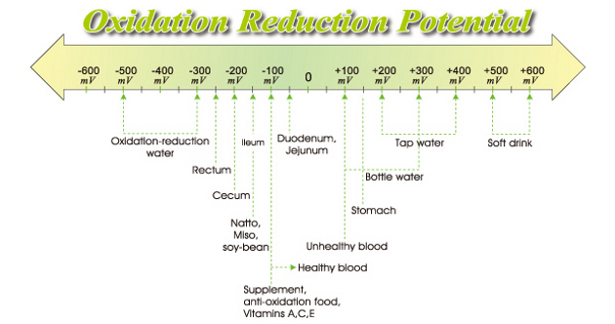
Why do we need to drink water at ORP-250mV?
As stated by Japanese research by Dr. Guan Gang Chu Zu, our internal ORP varies according to the digestive organ involved. + 150mV in the stomach, -50mV in the small intestine (fasting), -150mV in the small intestine (ileum), -200mV in the large (blind) intestine, -250mV in the large (rectum) intestine. About 90% of the water is absorbed in the large intestine (blind and rectum) after passing through the stomach and small intestine (fasting and ileum). The water at -250mV is therefore the ideal water for our body, however the water we usually drink has a much higher ORP which decreases during the journey in our digestive system. If we drink water at -250mV, the clusters of water molecules are smaller (from 25 to 5); for this reason we obtain an early absorption (already in the stomach and small intestine) which allows a better functioning of the digestive system. By connecting our ionizer to the domestic tap, you can drink purified and alkaline water, that is ionized at pH 9.5, optimal for your well-being and which helps to restore the balance of blood pH.
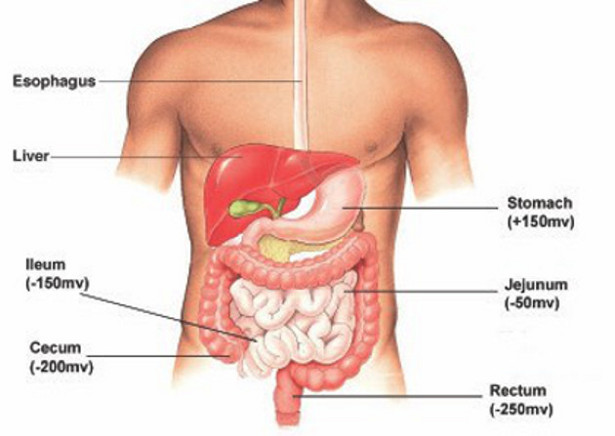
The PH degree
PH and ORP are important measures for assessing the alkalinity and acidity of water. The pH is the negative decimal logarithm of the hydrogen ion activity in a solution and varies with temperature.

The measured pH values ??vary from 0 to 14. Neutral water has a pH of 7 to 25 ° C, that is, it contains an equal concentration of H + and OH- ions. When an acid is dissolved in neutral water, the pH will become lower, as the water will contain a higher concentration of H + ions compared to OH- ions. When a base is dissolved in neutral water, the pH will become higher, since the water will contain a higher concentration of OH- ions compared to the H + ions.
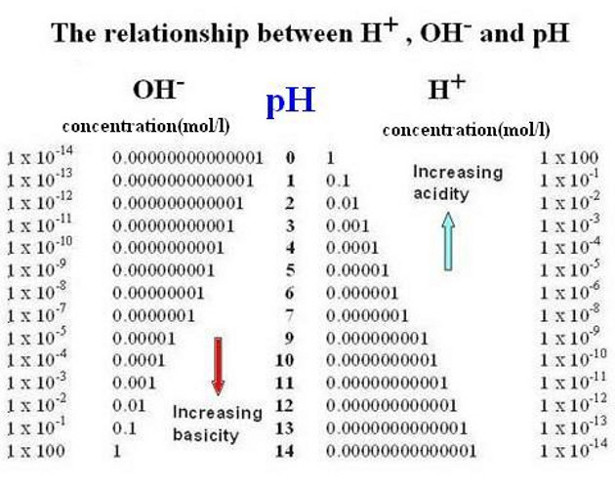
Ways of Use
Alternative uses of acidic water For beauty use, washing with slightly acidic water helps to obtain smoother skin; moreover, acid water can be used for washing small wounds because it is slightly disinfectant and also for the sanitization of surfaces and floors.
Small benefits of alkaline water
Help for intestinal peristalsis: drinking at least 500cc of alkaline ionic water on waking, increases the peristalsis of the digestive system and helps intestinal movement.
Help for the prevention of gout and arthritis: uric acid is harmful to the human body and is excreted through sweat, urine and feces. The lack of water increases the concentration of uric acid in the body which accumulates in the joints causing gout and arthritis and thus aging the joints themselves. Alkaline water partially neutralizes uric acid and facilitates its expulsion with urine and feces.
Help for preventing stone formation:Most people don't urinate at night. The production of urine in eight hours (at night) is very low with the result of high urinary concentration during sleep and it is in this phase that the stones begin to form. If at least 300 cc of alkaline ionic water are drunk half an hour before bedtime, the urine is diluted and prevention is promoted with respect to the onset of possible calculations.






